10 Agile Statistics To Empower Your Teams in 2023
In today’s fast-paced and ever-evolving business landscape, organizations face the constant challenge of staying competitive and adaptable. In the pursuit of maximizing productivity, efficiency, and customer satisfaction, many have turned to Agile methodologies as a guiding light. Agile approaches are not just reserved for software development; they have found their way into diverse industries, revolutionizing project management and problem-solving.
At the heart of the Agile philosophy lies data-driven decision-making. By leveraging key Agile statistics, businesses can gain invaluable insights into their processes, teams, and overall performance, enabling them to make informed choices that lead to continuous improvement. As Agile principles continue to gain traction, understanding the most impactful Agile statistics becomes essential for those seeking to harness the true potential of this transformative approach.
In this comprehensive article, we delve into the 10 most useful Agile statistics that can elevate your understanding of Agile practices.
How Were Our Statistics Gathered?
Before diving into these enlightening Agile statistics, let’s shed light on our data-gathering methodology behind this data. The foundation of our statistics lies in an extensive survey that we ran between March and May 2023. In this survey, we reached out to a diverse range of 3,219 companies, spanning various industries and organizational sizes, to capture their authentic experiences and preferences with the Agile methodology.
The survey was designed to extract comprehensive insights, ensuring that we could paint a vivid and accurate picture of how businesses across the globe are harnessing the power of Agile. Through a well-structured questionnaire, we probed into crucial aspects of their Agile implementation, project management practices, team dynamics, and overall performance metrics. Our aim was not only to identify the prevalent trends but also to unearth the unique challenges and triumphs that companies encounter on their Agile journey.
1. Which Departments Are Using Agile in 2023?
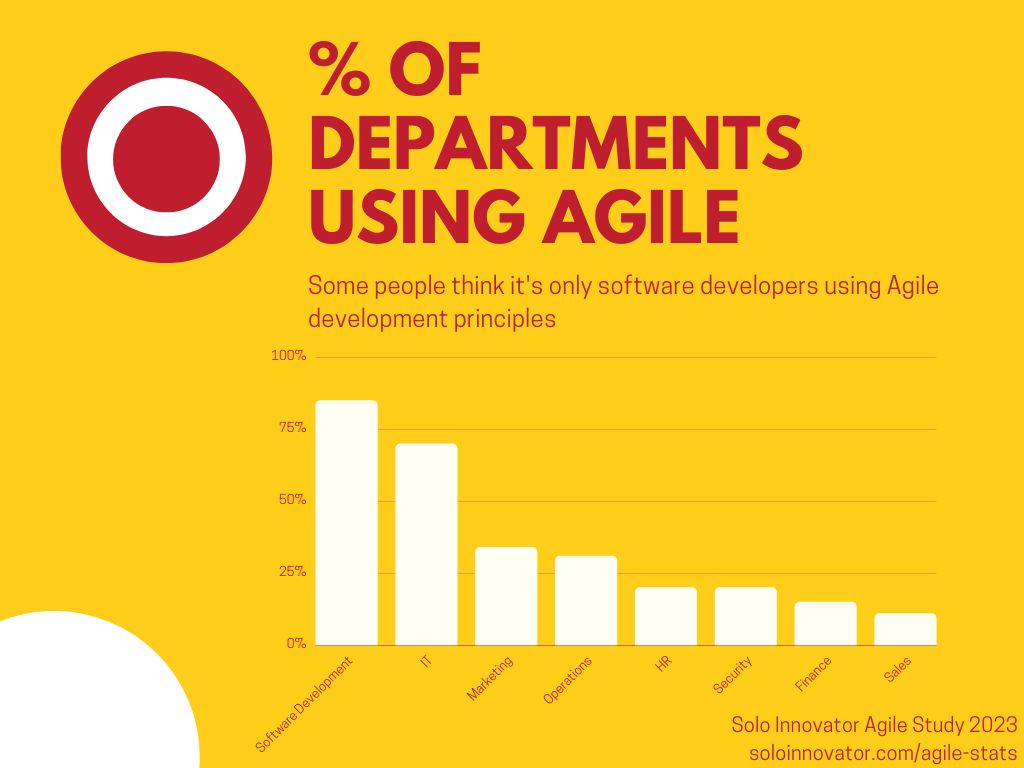
- 85% of Software Development departments use Agile practices
- 70% of IT departments use Agile
- 34% of Marketing Departments are using the Agile methodology
- 20% of HR and Security departments are using applying Agile to their workflow
- 15% of Finance departments use Agile
- 11% of sales departments use Agile
2. What Are The Main Causes of Agile Transformation Failure?
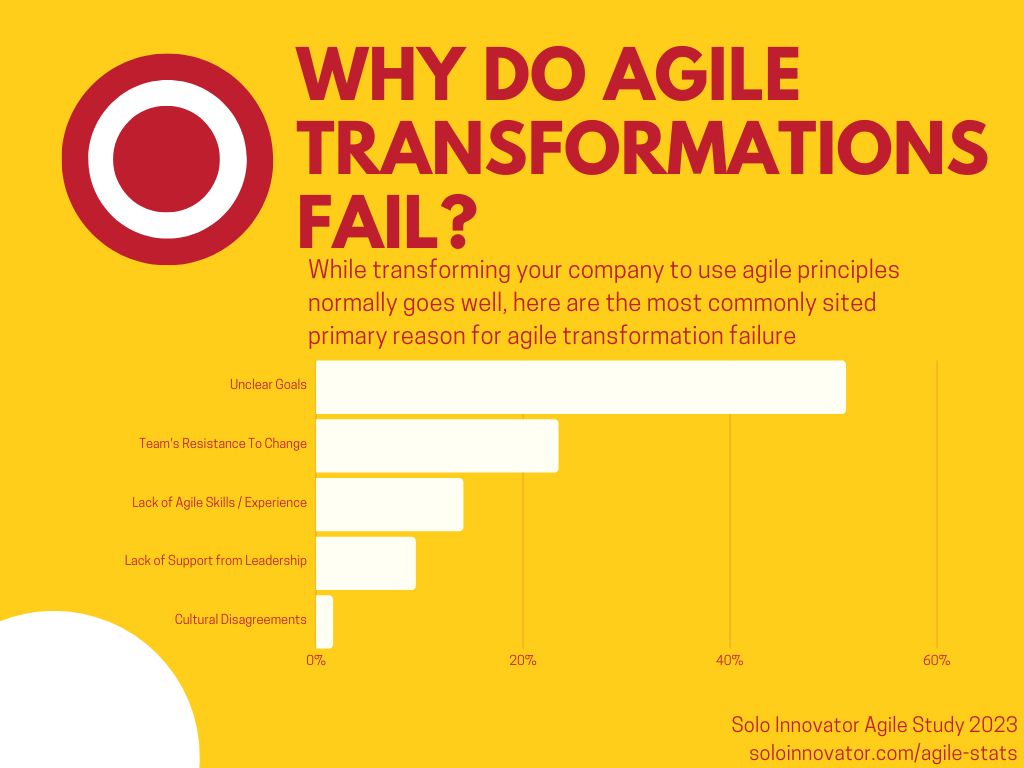
The most common reasons for Agile Transformation failure are:
- Unclear Goals (51.2%)
- Teams Resistance to Change (23.4%)
- Lack of Agile Skills / Experience (14.2%)
- Lack of Support from Leadership (9.6%)
- Cultural Disagreements (1.6%)
3. What Percentage of Companies Face Resistance to Agile Adoption?
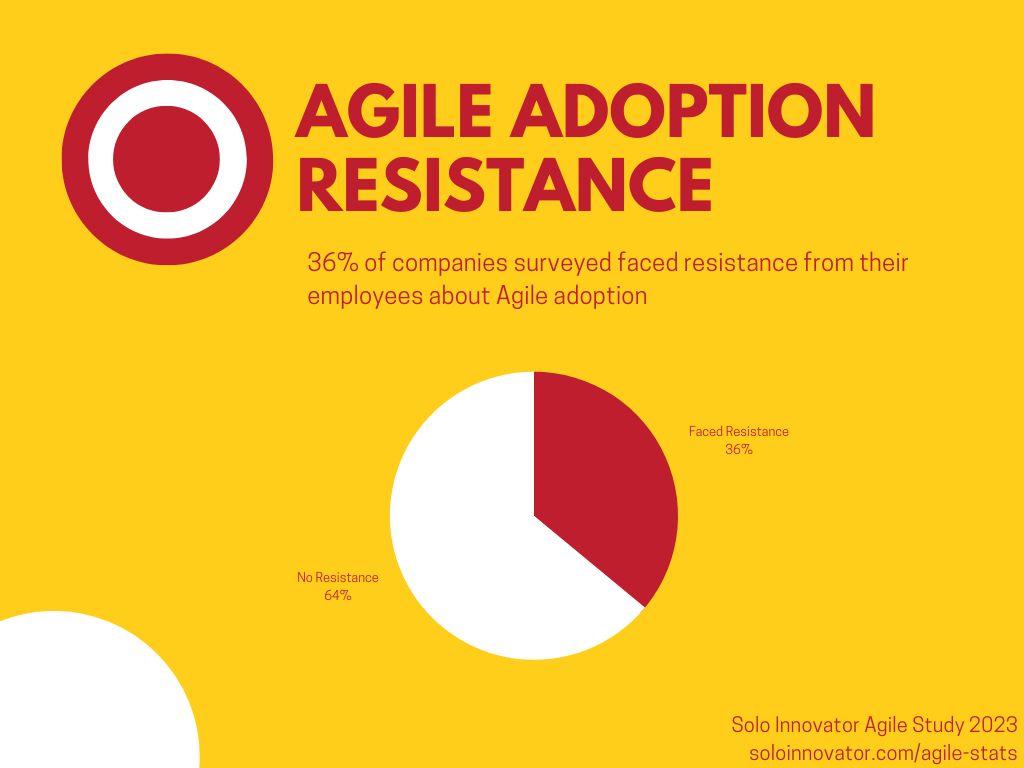
While team resistance to change makes up 23.4% of the reasons that companies fail to make the change to agile practices, only 36% of companies face resistance to agile adoption, meaning that 64% of companies face no team resistance.
4. What are Companies Looking For When Adopting Agile?
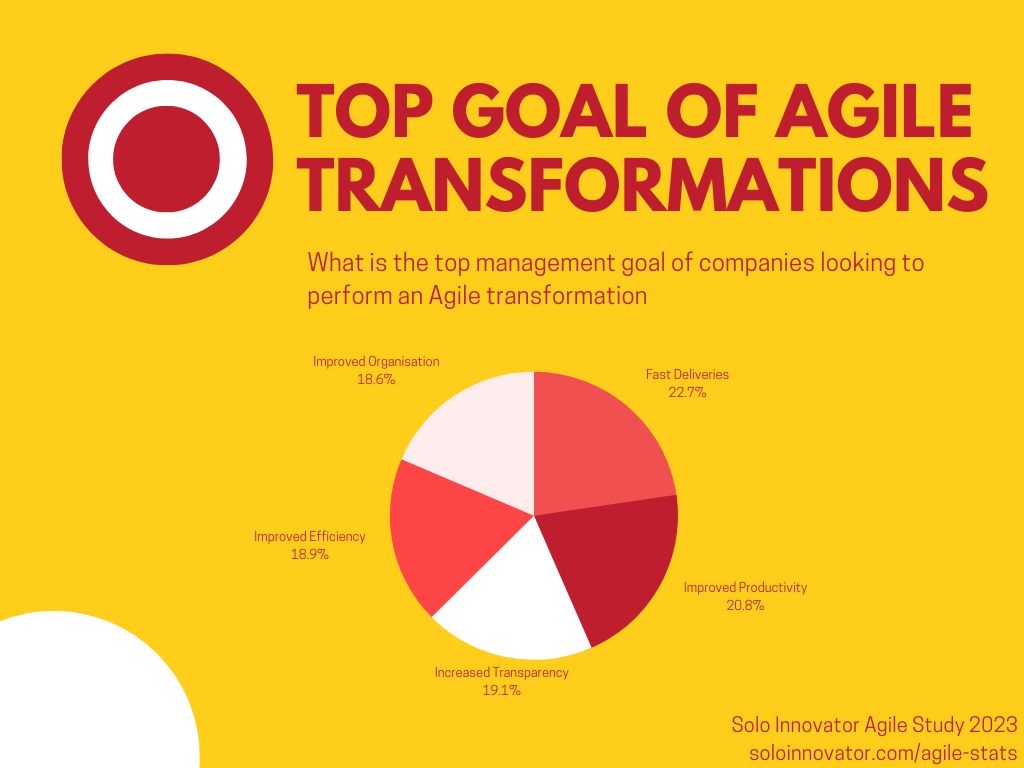
The main reasons that companies adopt the Agile methodology are to:
- Improve Delivery Speed (22.7%)
- Improve Productivity (20.8%)
- Increase Organisation Transparency (19.1%)
- Improve Efficiency (18.9%)
- Improve Organisation (18.6%)
5. What are the Top 4 Agile Benefits for Companies?
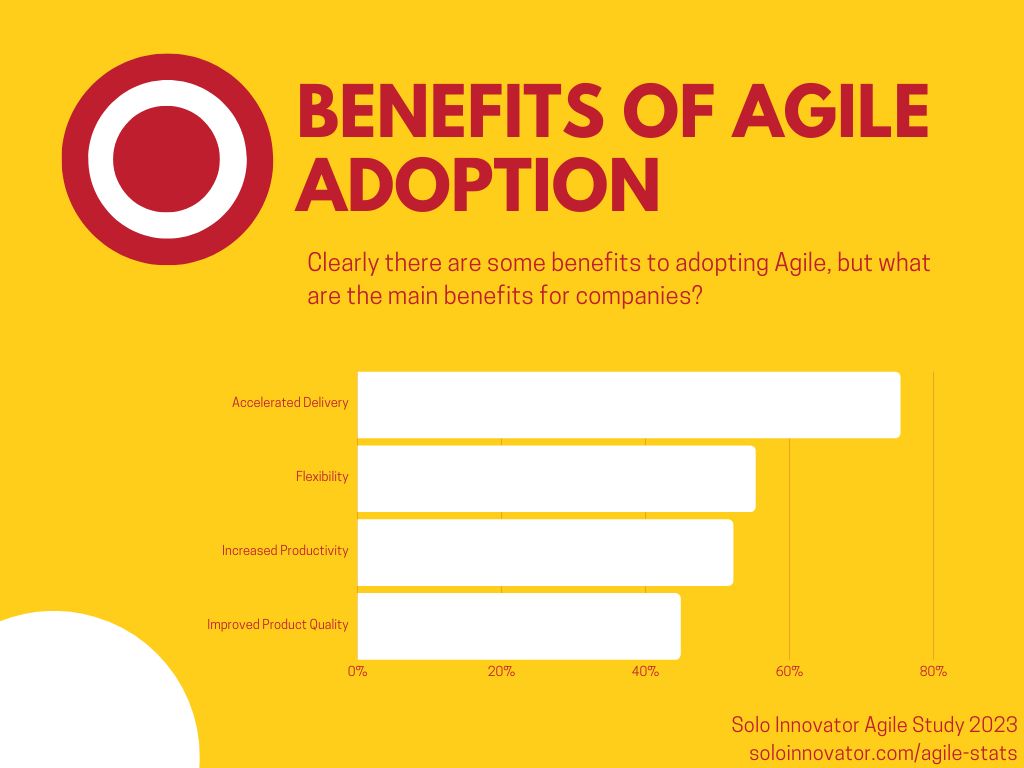
Out of the 3,219 companies surveyed, the benefits of agile were:
- Accelerated Delivery (75.3%)
- Increased Flexibility (55.2%)
- Increased Productivity (52.1%)
- Improved Product Quality (44.8%)
6. Does Using Agile Improve Project Success Rates?
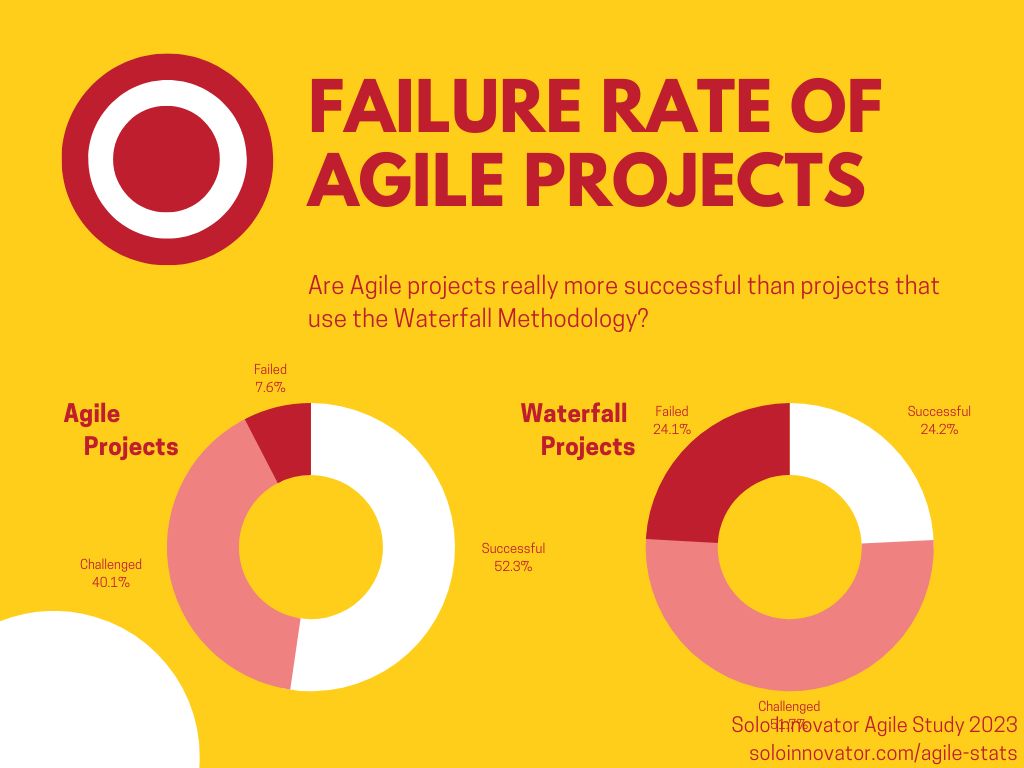
With an overwhelmingly positive reponse, yes Agile methodologies do improve project success rates as opposed to the Waterfall methodology.
- 52.3% of Agile projects were successful compared to only 24.2% of Waterfall projects
- 40.1% of Agile projects encountered at least 1 setback during development compared to 51.7% of Waterfall projects
- Only 7.6% of Agile projects failed compared to 24.1% of Waterfall projects
There we have it, the evidence is overwhelming that Agile projects deliver a much higher success rate than Waterfall projects.
7. How Does Revenue Improve With Agile?
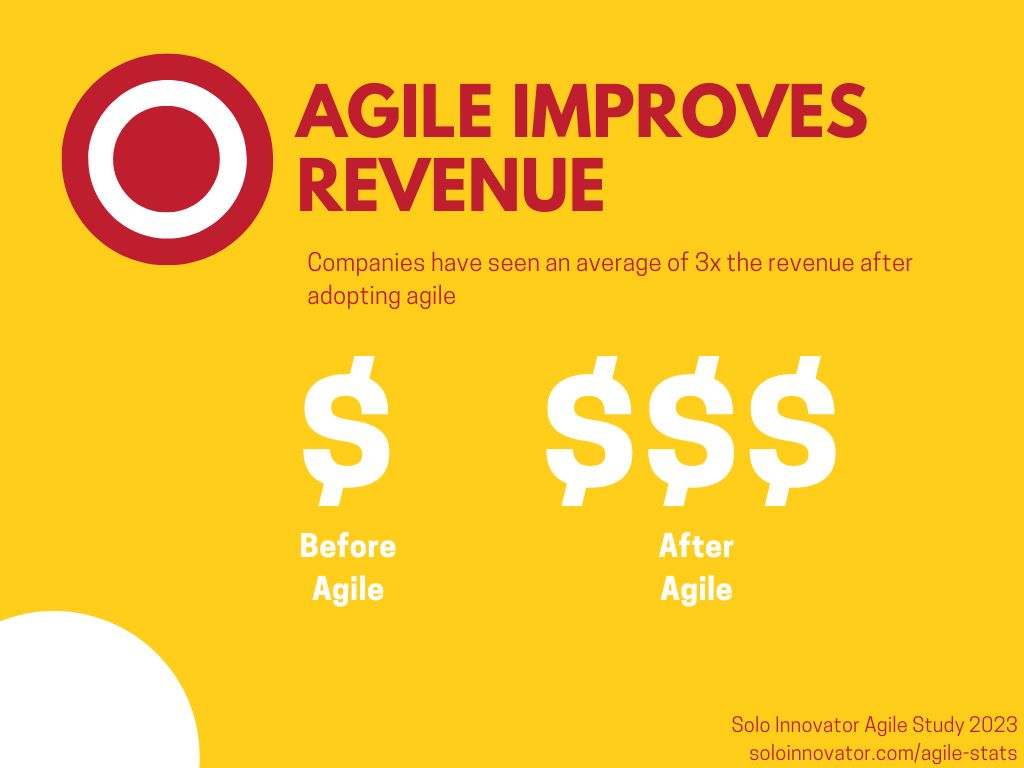
Using the Agile methodology does improve overall project revenue. On average, the 3,219 companies that responded to our survey stated that revenue increased 3x once their teams had fully implemented and adjusted to the Agile Methodology.
8. How Much More Productive are Agile Teams?
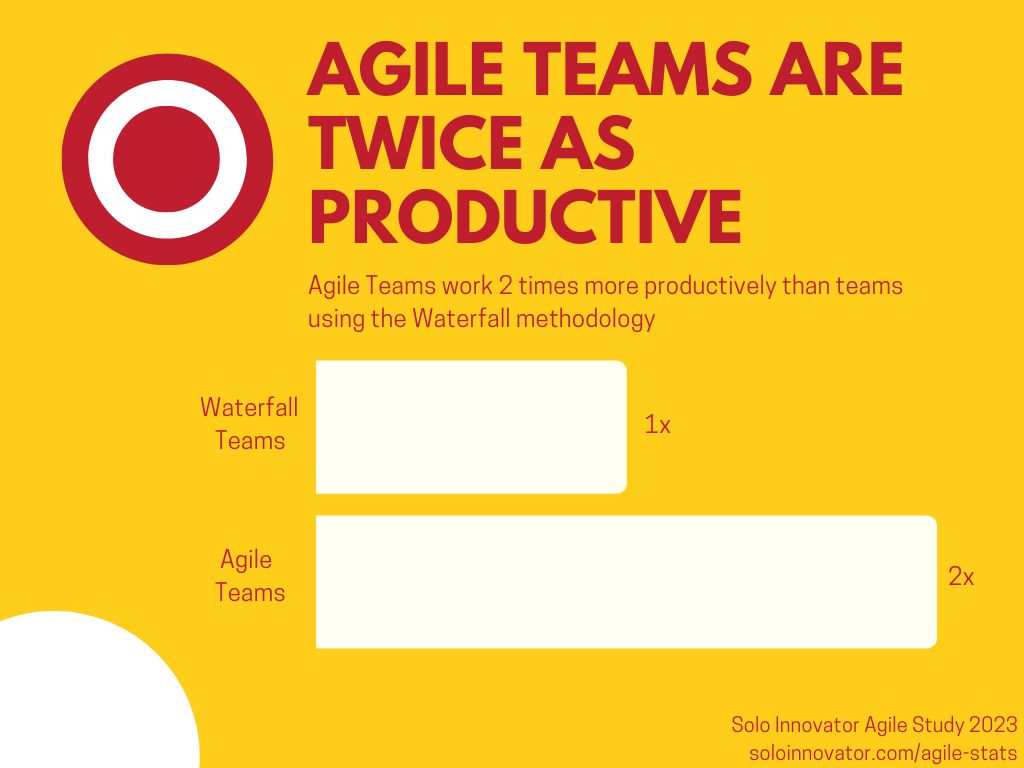
Now we know one of the reasons why projects that implement the Agile methodology generate more revenue, they’re twice as productive! Yes you read that right, on average the 3,219 companies that we surveyed found that teams were 2 times more productive after they had fully migrated to Agile methodologies.
9. What Agile Frameworks Are The Most Popular?

The most popular Agile frameworks are:
- Scrum (37.6%)
- Kanban (25.1%)
- Lean (12.2%)
- XP (14.1%)
- DSDM (3.3%)
- Other Methodologies (7.7%)
10. What Tools Are Used To Track The Agile Process?
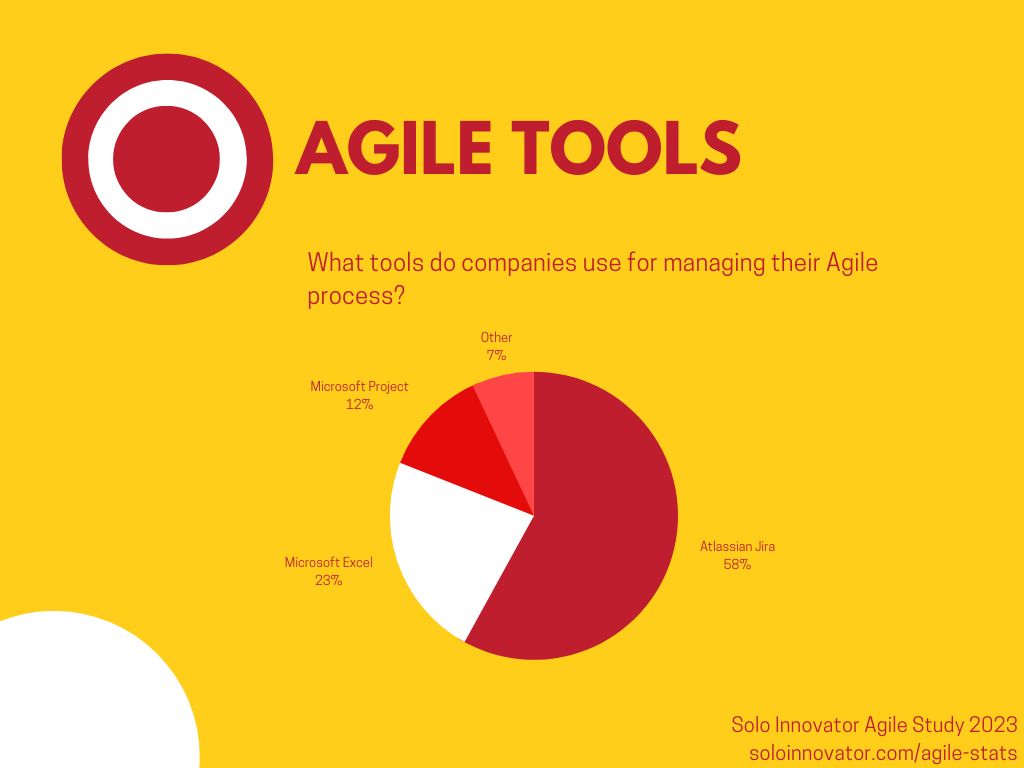
The most popular tools used to track the Agile process are:
- Atlassian Jira (58%)
- Microsoft Excel (23%)
- Microsoft Project (12%)
- Other (7%)
Overview
There we have it, the top 10 Agile statistics from our Agile survey. If you’d like to learn more about the Agile methodology, click here for our indepth guide. Alternatively, see our article on the lean startup methodology.
If you’ve enjoyed this post, we’d recommend diving into the following other posts in this Agile series:
- An Introduction to The Agile Methodology
- Themes, Epics and User Stories – The Core Components Of Agile
- Embracing Agile Team Dynamics
- What is SAFe Agile and Why Should I Use It?
- What is Waterfall Development?
- What is Lean Development?
- What is Scrum?
- A Deep Dive Into Epics
- Exploring The Power of User Stories
- How Can I Use Personas?
- Decoding Agile Estimation (Story Pointing)
- Agile Transformation: How Can My Business Start Using Agile?
- The Spotify Approach To Agile Development
- What Is Agile Portfolio Management?
- Agile Glossary
- Agile Statistics
Let us know in the comments what questions you’d like us to investigate next.







